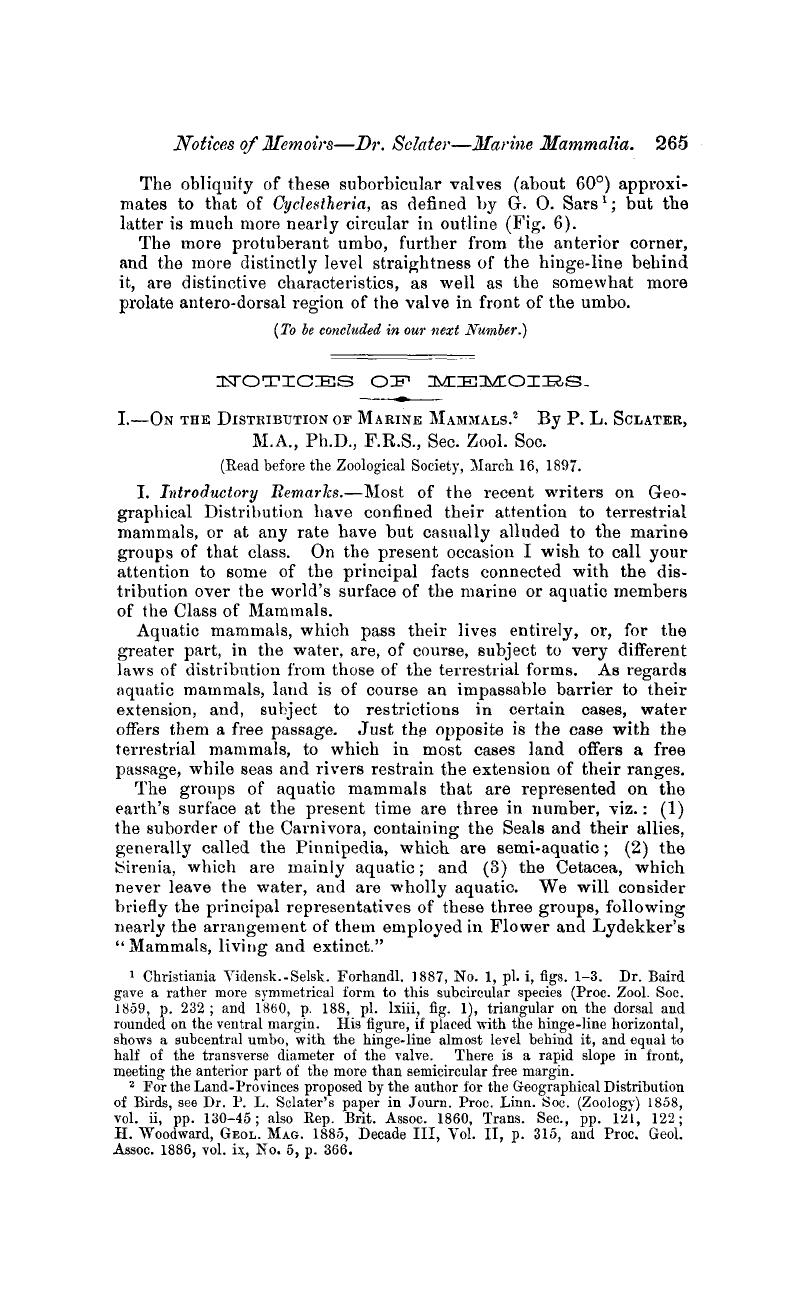No CrossRef data available.
Article contents
Notices of Memoirs
Published online by Cambridge University Press: 01 May 2009
Abstract

- Type
- Notices of Memoirs
- Information
- Copyright
- Copyright © Cambridge University Press 1897
References
pagge 265 note 1 Christiania vidensk.-Selsk. Forhandl. 1887, No. 1, pl. i, figs. 1—3. Dr. Baird gave a rather more symmetrical form to this subcircular species (Proc. Zool. Soc. 1859, p. 232 ; and 1860, p. 188, pl. lxiii, fig. 1), triangular on the dorsal and rounded on the ventral margin. His figure, if placed with the hinge-line horizontal, shows a subcentral umbo, with the hinge-line almost level behind it, and equal to half of the transverse diameter of the valve. There is a rapid slope in front, meeting the anterior part of the more than semicircular free margin.
pagge 265 note 2 For the Land-Provinces proposed by the author for the Geographical Distribution of Birds, seeDrSclater's, P. L. paper in Journ. Proc. Linn. Soc. (Zoology) 1858, vol. ii, pp. 130–45CrossRefGoogle Scholar; also Rep. Brit. Assoc. 1860, Trans. Sec, pp. 121, 122; Woodward, H., GEOL. MAG. 1885, Decade III, Vol. II, p. 315Google Scholar, and Proc. Geol. Assoc. 1886, vol. ix, No. 5, p. 366.Google Scholar
page 268 note 1 See “A Review of the family Delphinidse,” by Frederick, W. True: Bull. U.S. Nat. Mus., No. 36, Washington, U.S., 1889.Google Scholar
page 268 note 2 Presidential Address, Sect. Biology, Brit. Assoc. 1875 (Bristol); and Proc. Roy. Inst., vol. viii, pp. 511–13 (1878).Google Scholar
page 269 note 1 On former occasions I have used the term “lipotype” for a natural group which characterizes a particular locality by its absence. It would, however, perhaps be better to change the term to “lipomorph,” because the type and its compounds have been generally employed in reference to the particular specimens of a species upon which original descriptions are based (cf. Thomas, , P.Z.S. 1893, p. 241). In the same way a natural group which characterizes a particular country may be called a “topomorph” (![]() , locus, and
, locus, and ![]() , forma). Thus in Africa Giraffa and Phaeochcerus would be “topomorphs,” and Cervus and Ursus would be “lipomorphs.”Google Scholar
, forma). Thus in Africa Giraffa and Phaeochcerus would be “topomorphs,” and Cervus and Ursus would be “lipomorphs.”Google Scholar
page 270 note 1 A fine specimen of the Dugong from lamu (on the east coast of Africa, lat. 2° 50′ S.), obtained by Mr. J. C. Haggard in 1885, is in the British Museum.
page 271 note 1 Flower, and Lydekker, , “Mammals,” p. 241.Google Scholar
page 271 note 2 This generic term, established by Gill in 1872, seems to take precedence of pæcilophoca, proposed by Flower and Lydekker for the same type (L. Weddelli) in 1891. Cf. Allen, , “North American Pinnipeds,” p. 418.Google Scholar
page 271 note 1 Cf. Wallace, , “Geogr. Distrib.,” vol. i, p. 156Google Scholar




